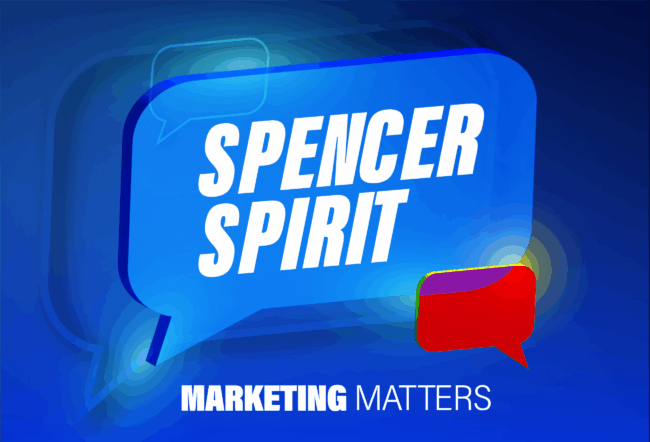Communication is a key factor in personal and professional success. Wharton marketing professor Jonah Berger has spent years studying the nuances of language, especially the ways in which it can be used to influence consumers. He draws on those scientific insights for his fourth book, Magic Words: What to Say to Get Your Way. Released this month, the book identifies six types of words that can help improve business and social communication by tapping into the basic human desire for connection and cohesion. Berger recently joined the Wharton Business Daily show on SiriusXM to share some highlights from the book.
Transcript
Wharton Business Daily: This is an interesting topic. What got you thinking about this for a book?
Jonah Berger: We use language in almost everything we do. We use language to convince clients. We use language to make presentations. We use language to talk to bosses and peers. We use language to talk to our family. Even our private thoughts rely on language. But while we spend a lot of time thinking about what we want to say, the ideas we want to get across, we spend a lot less time thinking about the specific words that we use.
That's actually a big mistake. Subtle shifts in our language can have a huge effect on our impact. Adding just one word to a request can make people 50% more likely to say yes. When we talk about something, rather than saying we like it, saying we "recommend it" makes people about a third more likely to take our recommendation.
Everything from the language used in email to the language you might use on an application for a loan provides deep insight into who we are and what we're likely to do in the future. The book is all about the power of these magic words and how we can increase our impact, both at home and at work, by understanding what these words are.
Wharton Business Daily: It's not only words but phrases and how they're delivered, correct?
Berger: It's all about language. Everything is simple, from adding an -er to the end of certain words, turning actions into identities, switching one word for another, or talking about different types of language. I'm not a linguist, so I start with really simple, actionable techniques and build up throughout the book to more complicated ways we can use language both to increase our impact and to better understand the people around us.
Encouraging Positive Perceptions with Language
Wharton Business Daily: Let's dig into some of these. You include “identity” and “agency.” What do those mean, exactly?
Berger: Yes, so often we're trying to get people to do something. We may want them to help us out with something. If we're a nonprofit, we might want people to get out and vote. Some research shows that turning these actions into identities can really help increase how persuasive we are.
We asked some students, for example, to help clean up a classroom. Some were asked to help, and others were asked to be a helper. Asking people to be a helper -- just adding -er at the end of help -- increased the percentage of people who helped by about 30%. Similarly, in a voting context, rather than asking people to vote, asking them to be a voter made people about 15% more likely to turn out.
The reason why is interesting; when you think about it, [it’s that] we're all busy. We all know that we should do certain things, but we don't have the time. At the same time, we want to see ourselves in desired ways. We want to see ourselves as smart and efficacious and good people. If an action is not just an action but becomes an opportunity to claim a desired identity, we're much more likely to take that action. Helping is fine, but if helping is an opportunity to see myself as a helper, now I'm more likely to do it.
Similarly, voting is something I know I should do, but if voting is an opportunity to see myself as a voter, this desirable characteristic, I'm more likely to do it. The same even holds true on the negative side. Losing is bad, but being a loser -- that's even worse, right? Nobody wants to cheat on a test, but being a cheater is much worse. Rather than saying, "Don't cheat," telling people, "Don't be a cheater" makes them less likely to cheat. There's that old campaign, "Don't be a litterbug." It makes people less likely to litter because they don't want to see themselves that way. Language not only suggests information, it suggests what it means to engage in a particular action and can change other people's actions as a result.
Wharton Business Daily: You also talk about asking the right questions and follow-up questions. Tell us about that.
Berger: Questions are really powerful. We often think about questions as a device to gain information. They do that, but they also change how we're perceived. They also change what aspects other people focus on. There's some nice research, for example, that looks at asking for advice. We're often stuck in tough situations. We'd like to ask somebody for advice, for help with our situation, but we think they'll think less of us. Maybe they're busy. Maybe they won't know the answer. And even worse, if we ask for advice, they'll think we don't know what we're doing. So, we don't do it.
But it turns out that the intuition that asking for advice makes us look [bad] is actually quite misguided. Some research looking at a variety of interactions finds that when we ask for advice, we're not perceived more negatively. We're actually perceived more positively. The reason why is that everybody is egocentric. Everybody loves to think that they give great advice. When we ask them for their advice, they go, "Wow, you're smart enough to ask me for my advice? You must be a pretty sharp person." So, not only does asking for advice allow us to get that valuable, useful information, but it also makes us be perceived more positively as a result.
Using Emotion in Marketing
Wharton Business Daily: How does emotion play a significant role?
Berger: Emotional language is a really powerful way to captivate audiences. I think all of us have friends or colleagues who, when they tell a story, everybody listens. You might wonder, "What makes certain stories so captivating, so engaging?" We did a big analysis of tens of thousands of movies. We analyzed the scripts of those movies, the language they used, and looked at what made certain movies more liked than others. What made them more engaging? We found something quite interesting. I think as presenters, as communicators, we often want to highlight good things. Social media is a veritable highlight reel of people's lives. It only talks about the really good stuff that happens. But here's the challenge. If someone always talks about the good stuff, we know it's going to be good, so it's not that engaging to pay attention to. It's also really hard for us to connect. Their life is so perfect. Our life isn't that perfect, so it's hard for us to connect with them.
If you look at good storytellers, they often do something really interesting. They intersperse the highs with lows. There's a great podcast that I love called "How I Built This" that talks to startup founders. It does a great job of not just talking about the highlights of what they did really well, but also talking about the low points. You raised money, but then you lost all that money. Or you tried this strategy and got a bunch of clients, but then your top people left for a different company. What did you do next?
The lows make the highs much more impactful. Not only is it more interesting, more engaging, because you don't know what's going to happen next, but it's a lot easier to connect with the person telling that story because their life is more like your own. We all have highlights, but we also have low points. By seeing stories as more of a mix of highs and lows, more like a roller coaster rather than a highlight reel, it has a bunch of beneficial impacts.



